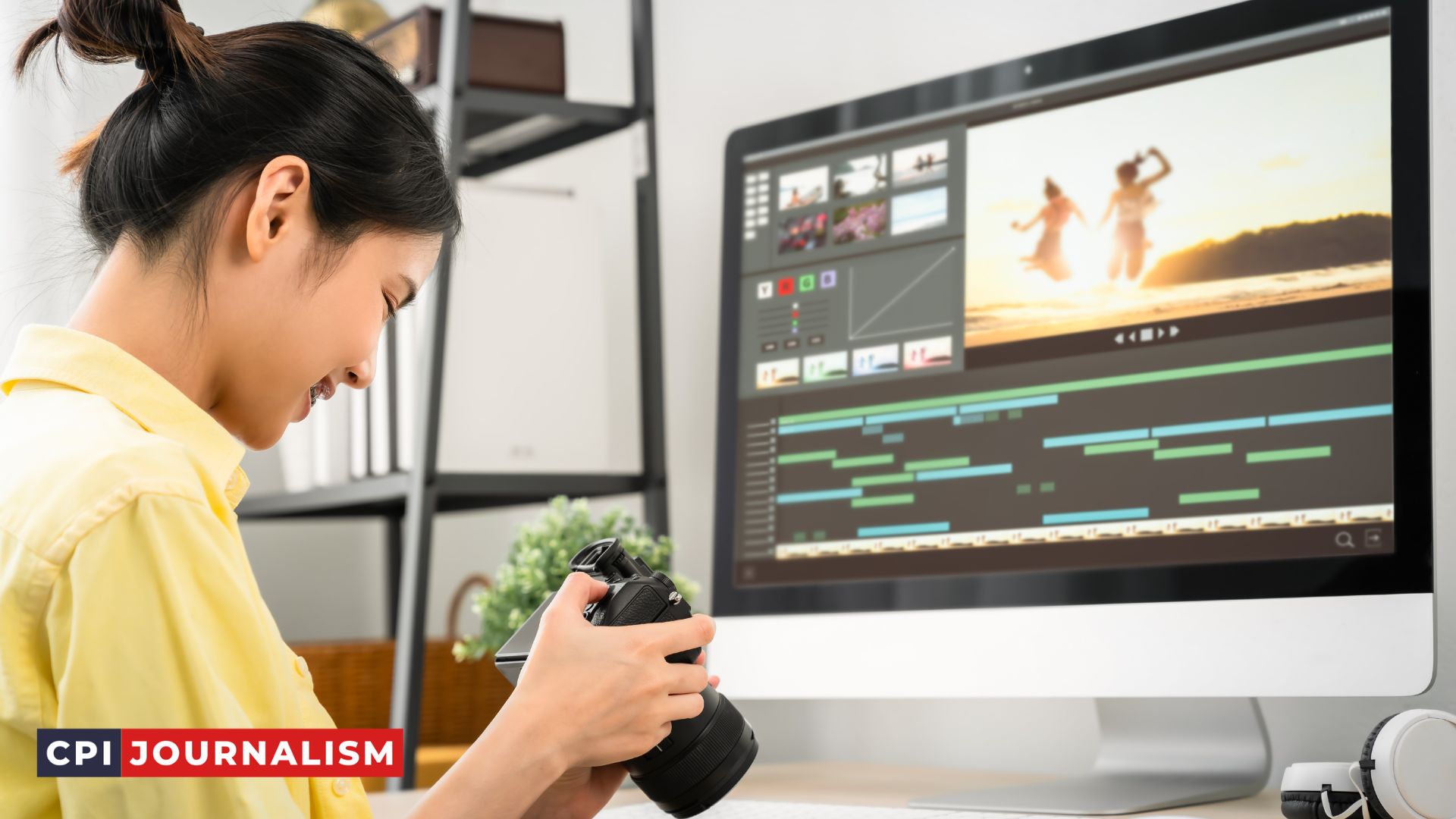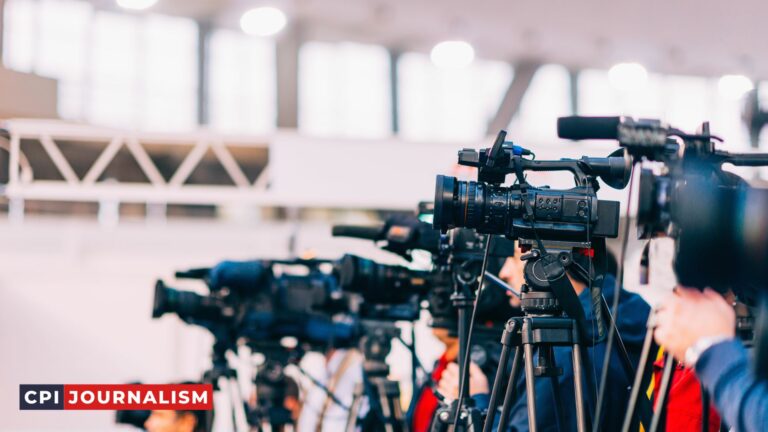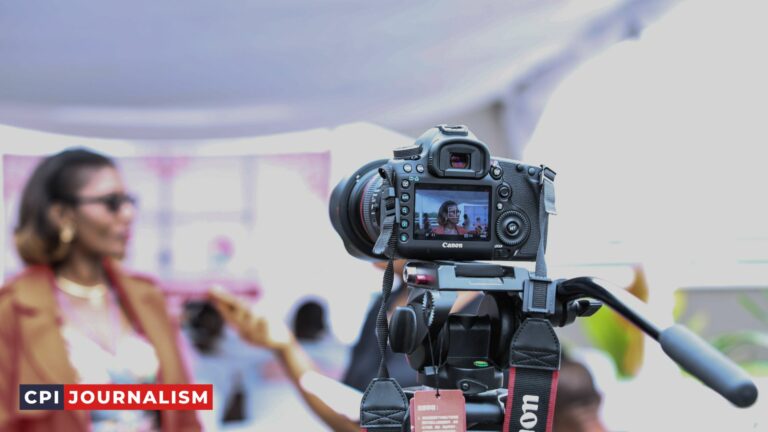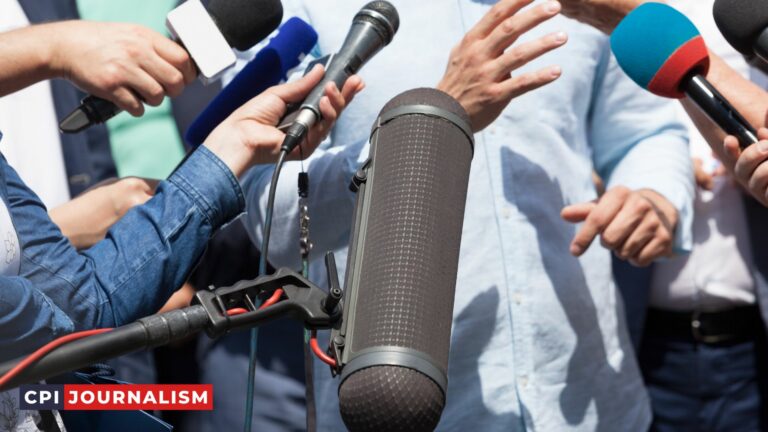How To Use Technology, Such As Video Cameras And Editing Software, To Produce High-Quality News Segments For Broadcast Journalists
Greetings to all aspiring broadcast journalists! As an experienced journalist, I am here to share my wisdom and experience on how to use technology, such as video cameras and editing software, to produce high-quality news segments.
With the right knowledge and understanding of the tools available, you will be able to create broadcast-ready news segments that will captivate and engage your viewers.
This article will provide guidance and tips on how to effectively use video cameras and editing software to create news segments that will draw in your viewers. So, let’s get started!
A. Overview of Technology Used in Broadcast Journalism
Broadcast journalism requires the use of a variety of technologies to produce high-quality news segments. Video cameras, editing software, and other tools are essential for capturing and delivering news stories.
As an experienced journalist, I’m here to provide you with an overview of the technology used in broadcast journalism.
Video Cameras: Video cameras are essential for capturing news footage. They come in a variety of shapes and sizes, from high-end professional cameras to consumer-grade models.
While professional cameras tend to offer more features and higher quality, consumer-grade cameras can still be used to create high-quality news segments.

Depending on the budget and needs of the broadcaster, cameras can range from low-cost models to expensive cameras used by professional broadcasters.
Editing Software: Editing software is necessary for editing and processing video footage. Professional software, such as Adobe Premiere Pro and Final Cut Pro, is typically used by broadcasters to create professional-grade news segments.
These programs offer a wide range of features, such as color correction, sound mixing, and more.
Lighting: Lighting is important for creating high-quality video footage. Professional broadcasters typically use special lighting kits to create optimal lighting conditions for their news segments. However, consumer-grade lighting solutions can also be used for lower budgets.
Sound: Sound is essential for creating a quality news segment. Professional broadcasters typically use professional microphones, mixers, and other audio equipment to capture and mix sound. However, consumer-grade options are also available for lower budgets.
These are just a few of the technologies used in broadcast journalism. With the right tools, you can create high-quality news segments for your broadcast.
B. Benefits of Using Technology in Broadcast Journalism
As a broadcast journalist, utilizing technology can be a major advantage in producing high-quality news segments. Technology enables a more efficient and cost-effective way of gathering, editing, and distributing news, enabling journalists to cover more stories in less time.
Here are some of the key benefits of using technology in broadcast journalism:
1. Quicker Production: Technology allows broadcast journalists to produce stories quickly and efficiently. Video cameras, editing software, and other technology can be used to quickly capture footage, edit it, and get it ready for broadcast.
This enables journalists to deliver news stories faster, allowing viewers to stay up-to-date with the latest news.
2. Improved Quality: Technology enables journalists to produce high-quality news segments. Video cameras and editing software provide the tools needed to capture footage and edit it into an engaging and professional-looking news segment.
Additionally, technology also allows journalists to add visual elements such as graphics and sound effects to enhance their stories.
3. Increased Reach: Technology also enables broadcast journalists to reach a wider audience. Through the use of the internet, broadcast journalists are able to reach audiences all over the world, allowing their stories to have a global impact.
Additionally, technology also allows journalists to use social media to promote their stories, making it easier for viewers to access and share news content.
These are just a few of the benefits of using technology in broadcast journalism. Utilizing technology enables journalists to produce more engaging and professional-looking news segments, while also increasing their reach and impact.
As a result, journalists can tell stories more quickly and effectively, giving viewers the latest news in a timely manner.
II. Types Of Technology Used In Broadcast Journalism
Broadcast journalism is an ever-evolving field, and technology plays a major role in the production of high-quality news segments. As a broadcast journalist, you’ll need to be familiar with the various types of technology used in the industry.
Here’s a breakdown of the most commonly used tools for broadcast journalism.
Video Cameras: Video cameras are essential for any type of broadcast journalism. High-end cameras are capable of capturing stunning 4K footage and offer a variety of features, such as slow-motion, time-lapse, and night-mode.
When selecting a video camera, consider the type of news segments you’ll be creating and the budget you have available.
Editing Software: Editing software is the backbone of any broadcast journalism production. With the right software, you can create stunning visuals, add captions, and edit audio and video clips. When selecting an editing software, consider your budget and the features you need.
Audio Equipment: Audio is an essential part of any broadcast journalism production. Quality microphones and other audio equipment will help you capture clear sound and helps you create more engaging content.
Lighting Equipment: Lighting is essential for creating visually appealing news segments. Professional lighting equipment can help you create the look and feel you want for your broadcast journalism segments.
Teleprompters: Teleprompters are a great way to ensure that your on-camera talent delivers their lines with confidence. They are also useful for ensuring that your talent sticks to the script and delivers the message you want to get across.
These are the most commonly used tools for broadcast journalism. By familiarizing yourself with these types of technology, you can create high-quality news segments that will engage viewers and help you stand out as a broadcast journalist.
A. Video Cameras
As a broadcast journalist, you must understand the basics of how to use video cameras in order to produce high-quality news segments. To start, you must be familiar with the types of video cameras available and know which one is best for the job.
The most common types of video cameras used in newsgathering are digital single-lens reflex (DSLR) cameras, broadcast-quality camcorders, and small ENG cameras.
DSLR cameras are the most widely used in newsgathering. They are lightweight and offer excellent image quality, but they are not ideal for capturing audio. Broadcast-quality camcorders are the industry standard for capturing news stories.
They are larger and heavier than DSLRs, but they offer superior audio capabilities and can handle low-light conditions better. Small ENG cameras are used to capture live shots in the field and are usually mounted on a tripod.
In addition to selecting the right camera, you must also know how to properly operate it. This includes understanding the menu and settings, setting the shutter speed and aperture, selecting the right lens, and using the right shooting techniques.
When shooting in the field, you must also be familiar with techniques such as panning and zooming, and be able to adjust the camera quickly to changing conditions.
Finally, you must understand the basics of lighting for newsgathering. Lighting equipment is essential for capturing high-quality video, and you must be able to set up the lights properly and quickly in order to get the best results.
By understanding the basics of how to use video cameras, you will be well on your way to producing high-quality news segments.
1. Factors to Consider
As a broadcast journalist, it is essential to consider the various factors that will help you produce high-quality news segments using video cameras and editing software.
Here are some key points to keep in mind:
1. Camera Quality: Invest in a high-quality video camera that is capable of capturing detailed video footage in a wide range of lighting conditions. Consider investing in a camera with advanced features such as optical stabilization, in-camera noise reduction, etc.
2. Audio Quality: Pay attention to the audio quality of the footage you record. Invest in a microphone that captures clear audio and avoid background noise as much as possible.
3. Editing Software: Choose an editing software that is easy to use and allows you to create professional-looking videos. Look for software that has the features you need, such as the ability to add effects, adjust color, and create transitions.
4. Storytelling: Make sure your story is compelling and captures the attention of your audience. Consider using interview clips, sound bites, and other audio/visual elements to bring your story to life.
5. Post-Production: Ensure that you spend enough time on post-production to refine your video and make it look its best. This is where you can add music, graphics, and other elements to your video to make it more impactful.
By following these guidelines, you can ensure that you create high-quality news segments for broadcast journalists.
2. Types of Video Cameras
For broadcast journalists, having the right video camera is essential to producing high-quality news segments. With the vast array of video cameras available on the market, it can be difficult to know which one is best for your needs.
To help you decide, here is a brief overview of the three main types of video cameras:
1. Professional Cameras: Professional video cameras are the most expensive option, but they offer the most advanced features and the highest image quality.
They typically have a large sensor, allowing them to capture more light and produce sharper images. They are also equipped with a variety of lenses, enabling you to get the shots you need for any situation.
2. Prosumer Cameras: Prosumer cameras are less expensive than professional cameras, but they still offer a great range of features.
They typically have smaller sensors than professional cameras, but they are still capable of producing excellent images. They are also lighter and easier to carry, making them ideal for news crews on the go.
3. Consumer Cameras: Consumer cameras are the least expensive option, and they are perfect for those just starting out in broadcast journalism.
They have smaller sensors and fewer features than professional or prosumer cameras, but they are still capable of producing decent images. They are also lightweight and easy to use, so they are a great choice for those just getting into video production.
No matter which type of video camera you choose, it is important to take the time to learn how to use it properly. With the right camera and the right techniques, you can produce high-quality news segments for broadcast journalists.
B. Editing Software
Editing software is an essential tool for broadcast journalists in producing high-quality news segments. Editing software can help you to quickly and easily build captivating stories that viewers will enjoy.
When selecting an editing software for your news segments, it’s important to consider your level of experience and the type of content you plan to create.
For instance, if you are a novice user, you may want to choose a more basic editing program such as Adobe Premiere Pro or Apple Final Cut Pro. These types of programs are user friendly, offer a variety of features, and allow you to easily edit and fine-tune your footage.
On the other hand, if you are an experienced user, you may want to choose a more advanced program such as Avid Media Composer or Adobe After Effects.
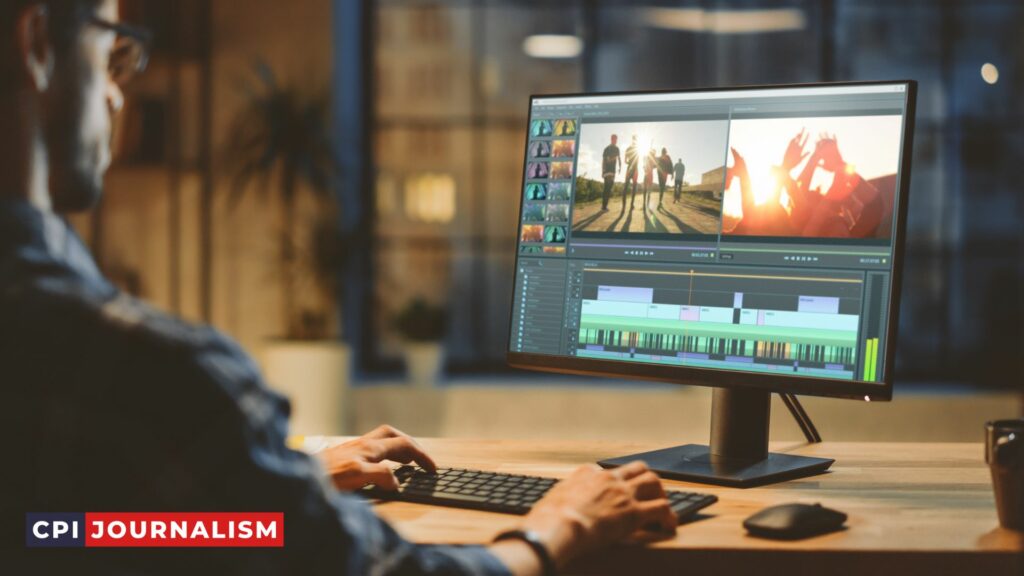
These programs offer a variety of features for creating complex stories and visual effects, and provide you with the tools to produce high-quality news segments.
In addition to selecting the right software for your needs, it’s important to make sure that you are familiar with the tools and features of your chosen program. This will help you to quickly and easily edit and fine-tune your footage and create captivating stories that viewers will enjoy.
Finally, it’s important to make sure that you are using the most up-to-date version of your editing software. This will ensure that you have access to the latest features and tools and will help you to create the highest quality news segments.
III. How to Use Video Cameras and Editing Software to Produce High-Quality News Segments
As a broadcast journalist, you need to ensure that the news segments you produce are of the highest quality. To do this, you will need to make use of the latest technology – namely, video cameras and editing software.
Here is a guide on how you can use these tools to create professional-looking news segments.
1. Firstly, you will need to choose the right video camera. You will want to consider factors such as resolution, frame rate and lens quality. The better quality the camera, the better the video footage will look.
2. Once you have chosen the right video camera, you can begin to shoot your footage. Make sure you take multiple shots of the same scene to give yourself more options when it comes to editing the footage.
3. After you have recorded your footage, it’s time to start editing. You will need to use a suitable editing software, such as Adobe Premiere Pro or Final Cut Pro, to create the final news segment.
4. You can begin to piece together your footage using the editing software. You will want to add transitions between clips, adjust the color and contrast, and add any text or graphics that you need.
5. Finally, you can export the video and upload it to your broadcasting platform. You can also use the software to create a shorter version of the video for social media platforms.
By following these steps, you can use video cameras and editing software to produce high-quality news segments. With the right equipment and the right software, you can create professional-looking videos that will engage your audience.
A. Setting Up The Camera
As an experienced broadcast journalist, I know that setting up the camera correctly is essential for capturing high-quality footage.
First and foremost, make sure you have the right type of camera for the job. A professional-grade broadcast camera is ideal, but if budget is an issue, a DSLR camera can also work.
Once you have your camera, it’s time to set up the basics. Start by framing your shot: decide what you want to capture in the frame and adjust the camera accordingly.
Make sure the camera is level and stable, either mounted on a tripod or held firmly in your hands. If you’re shooting handheld, remember to keep your movements slow and steady.
Next, it’s time to adjust the camera settings. Start with the shutter speed. Generally, faster shutter speeds are better for outdoor shots, while slower shutter speeds work well for indoor shots.
Then, adjust the aperture to get the right amount of light in the frame. A wide aperture lets more light in, while a narrow aperture lets less light in.
Finally, adjust the white balance to ensure the colors in your shot look accurate. If you’re shooting in natural light, you should usually set the white balance to “daylight”. If you’re shooting indoors, set the white balance to “tungsten”.
Once you’ve set up your camera, take a few test shots to make sure you’re getting the right lighting and framing. Make any necessary adjustments, and you’re ready to start capturing your footage!
1. Lighting
Lighting is one of the most important elements of any video production, and for broadcast journalists, it is essential to ensure your footage looks professional and flattering. Without proper lighting, your footage will look flat and unappealing, and could even be unusable.
When setting up your lighting, you should consider the environment and the purpose of the shot. For example, if you’re shooting an interview in a studio, then you should use three-point lighting. This consists of one key light, one fill light, and one backlight.
The key light should be the brightest, and should be placed to the side and slightly above the subject.
The fill light should be less bright and positioned on the opposite side of the key light, to fill in shadows. The backlight should be placed behind the subject, and should be the least bright of the three. This will help to separate the subject from the background and give them more depth.
If you’re shooting on location, then you should be mindful of the available light. Natural light is best, so if possible, position your subject near a window, and use reflectors to bounce the light back onto the face of the subject.
If natural light is not available, then you should use artificial lighting. Try to use soft lighting, such as LED lights, to avoid harsh shadows.
It’s also important to be aware of any color casts that may be present. If you’re shooting indoors in artificial light, then you may find that the footage has a yellow or orange hue. This can be corrected in post-production, but it’s best to try and avoid it in the first place.
If possible, try to use a white balance card to set the color temperature, and add some blue gels to the lights to help cool down the overall tone.
By taking the time to set up your lighting correctly, you can ensure that your footage looks professional and your subjects look their best. With the right lighting, you can create high-quality news segments that will impress your audience.
2. Audio
Audio is an essential component of any news segment. As a broadcast journalist, you need to make sure that your audio is of the highest quality. To do this, you will need to use a variety of audio equipment and audio editing software.
One of the most important pieces of equipment you will need is a microphone. Different types of microphones are best suited to different applications.
For example, if you are recording interviews, a lavalier microphone is ideal, as it can be clipped to the collar of the person being interviewed and will capture clear, clean audio.
For recording sound in a noisy environment, such as a busy street or a protest, a shotgun microphone is the best choice, as it can pick up sound in a focused area, while reducing background noise.
In addition to microphones, you will also need to use audio mixers and recorders. Audio mixers allow you to balance the levels of multiple audio sources, while recorders allow you to capture the audio and store it in a digital format.
Once you have recorded your audio, you will need to edit it using audio editing software. This software allows you to adjust the levels, remove background noise, and even add sound effects.
By using the right equipment and software, you can create high-quality audio for your news segments. Taking the time to ensure your audio is of the best possible quality will go a long way towards making your news segments more engaging and professional.
3. Framing
Framing is an important part of the production process for broadcast journalists. It is the process of selecting the most important elements in the scene and using them to create a visually compelling story.
When using video cameras and editing software to produce news segments for broadcast, it is important to consider the framing of the shots.
When framing, think about the composition of the scene. Consider how the elements in the scene will be arranged in the frame. Think about the use of lines, shapes, and color to create a visually interesting image.
When shooting, consider the use of different camera angles, such as close-ups, mid-shots, and long shots. These angles can help to emphasize the important elements in the scene and create a more dynamic image.
When editing, consider using transitions, effects, and sound to create a more visually interesting and engaging story.
Transitions can help to connect shots and create a more seamless transition between scenes. Effects and sound can be used to enhance the visual and auditory appeal of the story.
By taking the time to consider the framing of your shots, you can create a visually compelling story that will engage and captivate your audience. With the proper use of video cameras and editing software, you can create high-quality news segments for broadcast.
B. Editing the Footage
Editing the footage is a critical step in producing reliable, high-quality news segments. It is important that broadcast journalists understand the basics of video editing and have experience operating professional editing software in order to ensure that their news segments meet the standards of their audience.
First and foremost, it is essential that broadcast journalists are familiar with the basics of video editing.
Understanding the fundamentals of editing, such as the different types of editing transitions, how to splice footage together, and how to add visual effects, is essential for creating an effective and engaging news segment.
Additionally, understanding how to properly set up the timeline and sequence of shots is also important for creating a cohesive and impactful news segment.
Once broadcast journalists have a basic understanding of the basics of video editing, the next step is to acquire the necessary software and hardware for editing the footage.
There are a variety of professional editing software packages available, such as Adobe Premiere Pro, Final Cut Pro X, and Avid Media Composer.
Additionally, it is important to make sure that the hardware is sufficient for editing the footage. This includes having an adequate amount of RAM and storage, as well as a powerful processor.
Finally, it is important to make sure that the footage is properly organized before beginning the editing process. It is best to label and number each clip, as well as any b-roll footage, and organize it into folders based on its content.
This will make it much easier to find the footage when editing, and will save a great deal of time.
By understanding the basics of video editing and having the necessary software and hardware to edit the footage, broadcast journalists will be able to confidently produce high-quality news segments for their audience.
1. Choosing the Right Editing Software
As a broadcast journalist, one of the most important decisions you’ll make in producing your news segment is choosing the right editing software.
The right software will allow you to efficiently and effectively edit your video, adding the right elements to make your story shine.
When selecting an editing software, consider your budget, the platform you’re using (PC or Mac), and the features you’ll need.
Free or low-cost editing software can be a good choice for beginners, but as you become more experienced and your work grows more complex, you may wish to invest in a more robust program.
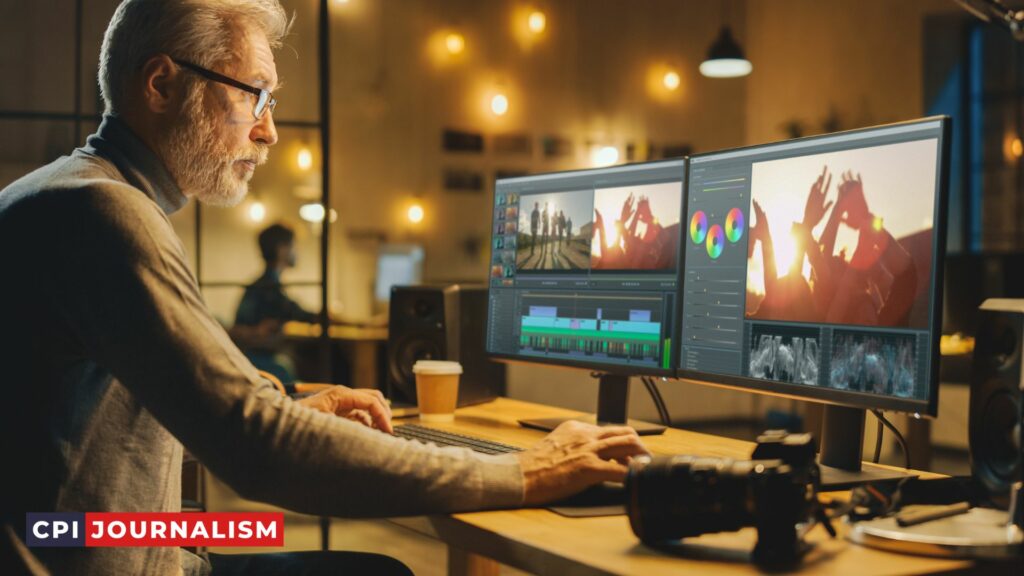
Adobe Premiere Pro is a popular choice among broadcast journalists. It offers a comprehensive suite of tools that allow you to quickly and easily edit your video, add titles, graphics, and other effects, apply color correction, and more.
Adobe After Effects is another popular choice, offering powerful tools for motion graphics and visual effects.
Final Cut Pro is another popular editing software for PC and Mac users. It offers a range of features for both beginners and experienced professionals. Final Cut Pro is especially recommended for those who need to work with multiple video tracks, as it offers a sophisticated timeline for editing.
No matter which editing software you choose, it’s important to take the time to become familiar with the features and tools available. Investing the time to become comfortable with the software will make your editing process faster, easier, and more efficient.
2. Organizing the Footage
Once you have collected the necessary footage for your news segment, you need to properly organize it for the editing process.
The first step is to review all the video clips you have obtained and create a rough timeline of the segment. This will provide a roadmap for the editing process, helping you to efficiently put together the footage in the desired order.
Once you have a timeline in place, you can begin to organize the footage. This is an important step as it will ensure that all the material is properly sorted and labeled for easy identification.
By properly labeling the footage and organizing it into different folders, it will be easier to find the clips you need when you are editing.
You should also take time to review the footage and make notes of any particular shots you may want to use. This will come in handy during the editing process, as you can easily access the shots you need without having to search through all the footage.
Additionally, you should also make notes of any particular audio clips that you may need to add to the segment.
By taking the time to properly organize and label your footage, you will be able to save time and effort when it comes to editing the news segment. This will help you to produce a high-quality news segment that is both visually appealing and informative.
3. Adding Effects
Now that you have everything ready for your news segment, it’s time to add some effects to make it even more impactful. Depending on the type of news segment you are creating, you may want to add visual effects, sound effects, or both.
Visual effects can add a lot of variety and interest to a news segment. There are many different types of visual effects available, from simple fades and wipes to more complex motion graphics.
You can also use filters and overlays to enhance the look of the video. Be sure to use these effects sparingly, as too many effects can be distracting.
In terms of sound effects, there are also many different options. You can use background music to create a certain atmosphere or mood, as well as sound effects to make certain parts of the video more dramatic or exciting.
You can also use sound effects to transition between scenes or sections of the news segment.
Finally, don’t forget to add titles and captions to your news segment. This will help to provide context and information to your audience. Titles and captions can also be used to provide a sense of continuity between clips.
By adding effects to your news segment, you can make it even more interesting and engaging for viewers. Just be sure to use effects sparingly and in a way that doesn’t distract from the content of the news segment.
4. Exporting The Final Product
Once you have finished putting together your news segment using video cameras and editing software, it is time to export the final product. Exporting the final product is an important step in the process of using technology to produce high-quality news segments for broadcast journalists.
In order to export the finished news segment, you will need a suitable file format for broadcast. The most common file formats for broadcast are either .mov or .mp4.
These file formats are the most widely accepted by broadcast stations. It is important to use a suitable file format as the quality of the video will be degraded if the wrong format is used.
When exporting the final product, you should also pay attention to the codecs and bitrates used. Different codecs will affect the quality of the video, so it is important to use the correct codec for broadcast.
Generally, broadcast stations prefer a codec that supports high-quality visuals with low file sizes, such as H.264 or AVC. It is also important to use a suitable bitrate, as this will affect both the quality and size of the file.
Finally, when exporting the final product, you should check that the video is in the correct format and size for broadcast. Most broadcast stations will specify the exact format and size they require, so be sure to double check that your video is in the right format.
Once you have exported your final product in the correct format, you are ready to send it off to the broadcast station. With the right technology and know-how, you should be able to produce a high-quality news segment that is ready for broadcast.
IV. Conclusion
As an experienced journalist, I am confident that using technology, such as video cameras and editing software, to produce high-quality news segments for broadcast journalists is an invaluable skill.
It can help to improve the production value of any news segment, and it can even help to save time and money. With the right knowledge and practice, anyone can become an expert in using technology to produce broadcast news segments.
By learning the basics of video cameras and editing software, journalists can quickly and effectively produce news stories that have an excellent production value.
Additionally, with the right equipment and software, journalists can easily edit their news stories to ensure that they are accurate and up-to-date.
Finally, by utilizing the various features of video cameras and editing software, journalists can ensure that their news segments are of the highest quality.
Overall, technology is an essential tool for any broadcast journalist. By utilizing the various features of video cameras and editing software, journalists can produce high-quality news segments that are both accurate and visually appealing.
With practice and dedication, journalists can become experts in using technology to produce news segments that are sure to impress.
A. Summary of Benefits of Using Technology in Broadcast Journalism
Using technology in broadcast journalism offers a number of important benefits. The most obvious benefit is that it allows journalists to capture and produce high-quality news segments more quickly and easily than ever before.
The use of video cameras and editing software gives journalists access to a wide range of tools that can be used to create compelling stories and visuals.
Technology also allows journalists to access a range of sources that can help to provide more accurate, timely and comprehensive coverage.
For example, journalists can access news footage from around the world, which can be used to provide a more in-depth understanding of a story. Technology can also be used to better capture and analyze data, which allows journalists to provide more in-depth analysis of a story.
Technology also offers benefits in terms of reaching a wider audience. With social media, journalists can reach a much larger potential audience, allowing them to share their stories and reach more people than ever before.
This can help to create an engaged audience that is more likely to take action on the stories they consume.
Finally, technology can help to reduce the cost of producing news segments. By using software such as video editing software, journalists can drastically reduce the amount of time and money spent on producing a news segment.
This can allow for more time to be spent on researching and producing a well-crafted story, which can help to ensure the accuracy and quality of the news segment.
In short, the use of technology in broadcast journalism offers a number of important benefits including improved speed and accuracy, wider reach, and lower production cost.
These benefits can help journalists to create more compelling and accurate news segments, while also helping to reach a larger potential audience.
B. Summary of Steps for Producing High-Quality News Segments
Producing high-quality news segments for broadcast journalists requires a combination of technical know-how, good storytelling, and a keen eye for detail.
To get started, here is a summary of the necessary steps for producing high-quality news segments:
1. Research: Before beginning production, it is important to thoroughly research the topic and collect the necessary information. This will help you to craft a compelling story and determine the best way to present it.
2. Storyboarding: Once the research is complete, the next step is to create a storyboard. This will help you to visualize the story and determine the best way to present it.
3. Equipment Setup: Once the storyboard is complete, it is time to set up the equipment and begin shooting. Depending on the story, this may include setting up multiple cameras, lights, and audio equipment.
4. Shooting: After the equipment is set up, it is time to start shooting. It is important to take your time and make sure to get the best possible shots.
5. Editing: After the footage is shot, it is time to begin editing. This is where you will put together the story and create the final product.
6. Distribution: Once the segment is complete, it is time to distribute it. Depending on the platform, this may include uploading it to a website, broadcasting it on television, or posting it to social media.
By following these steps, broadcast journalists can produce high-quality news segments that will engage viewers and tell compelling stories.
C. Summary of Types of Technology Used in Broadcast Journalism
Broadcast journalism relies heavily on technology to produce high-quality news segments. Video cameras are one of the most important pieces of technology used, as they are the tool that captures the images and footage that will be used in the broadcast.
Video cameras come in various shapes and sizes, and can range from compact handheld models to larger professional-grade cameras.
In addition to video cameras, broadcast journalists also require editing software to assemble and edit the footage they have captured.
Editing software allows journalists to cut and arrange footage, add graphics, music, and sound effects, and create polished stories.
Other types of technology used in broadcast journalism include microphones, audio recorders, and teleprompters.
Additionally, journalists may also use satellite uplinks, which provide a live feed of their broadcasts to distant locations. In summary, broadcast journalism requires a wide range of technology from video cameras to editing software to microphones and audio recorders.

